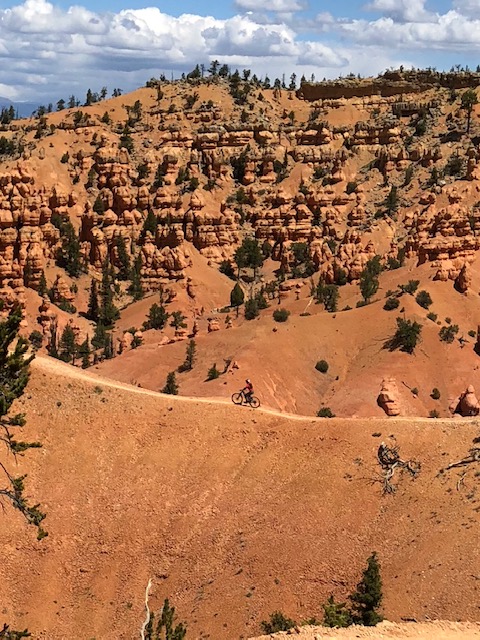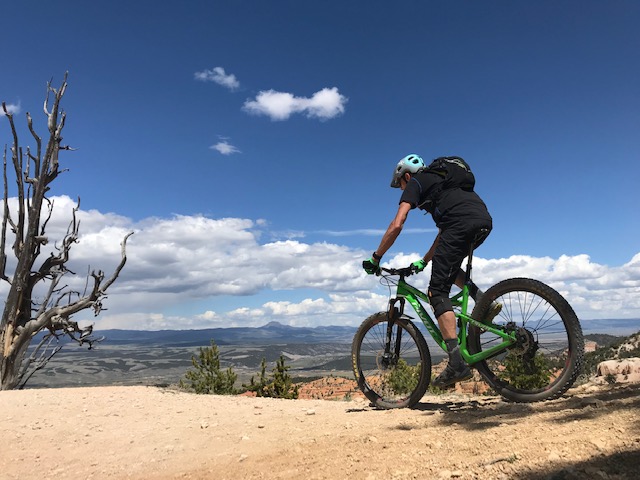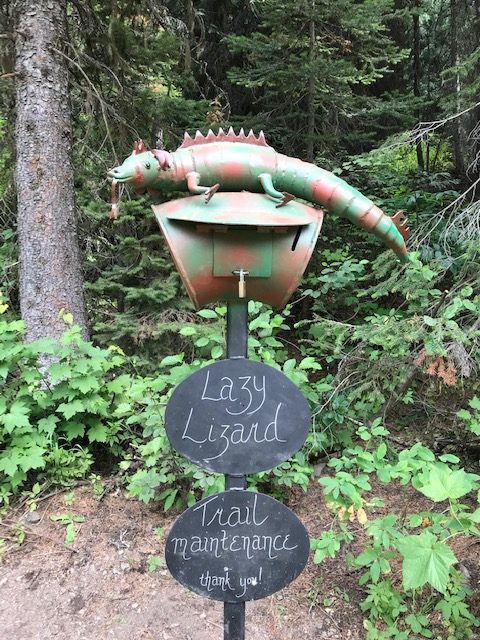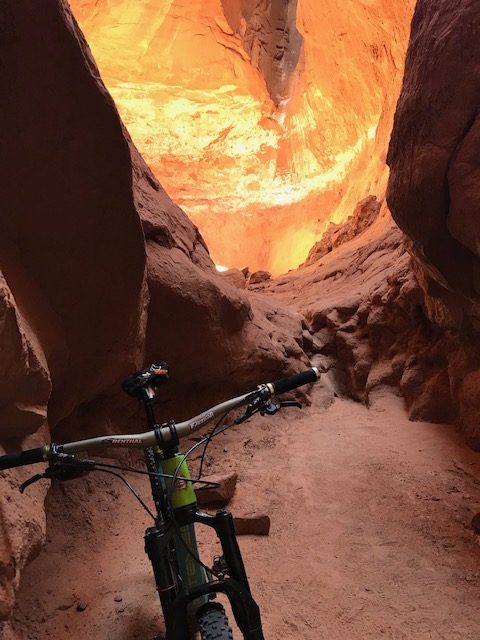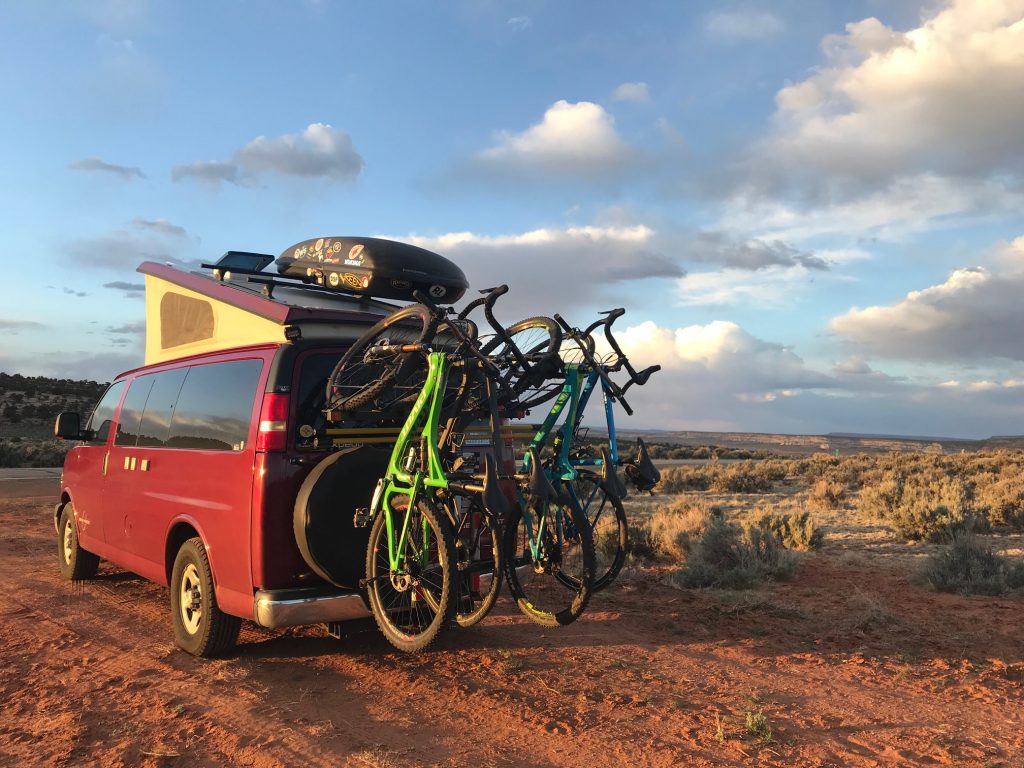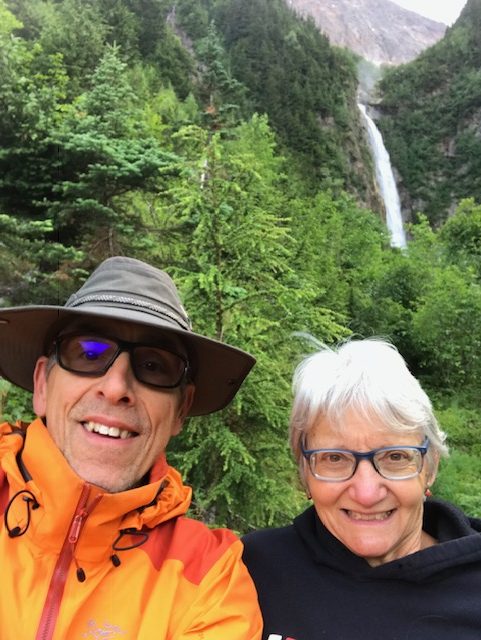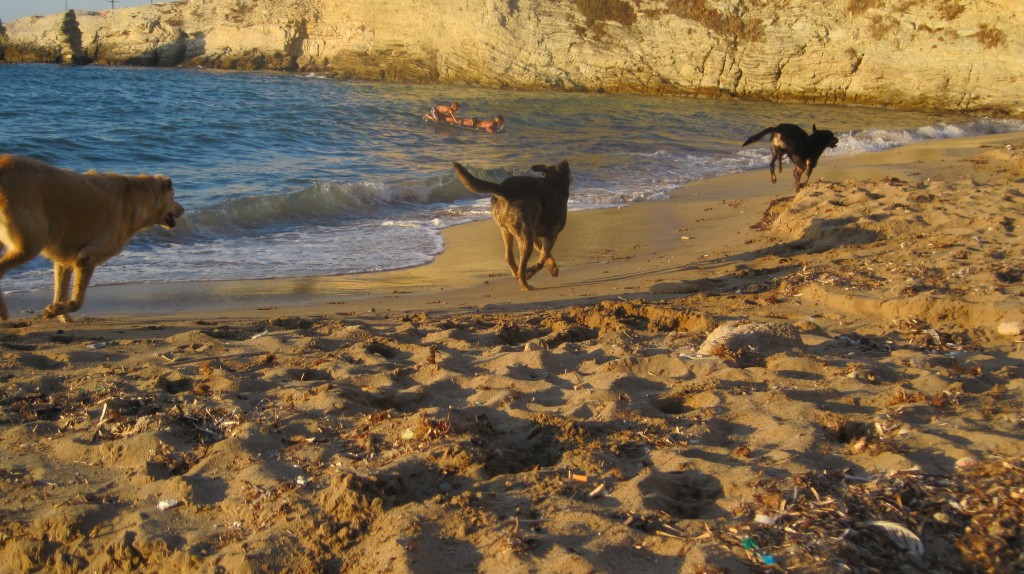(This is the third in a series of stories about our post-retirement van adventure from Ohio to Alaska and back in summer 2018. By the numbers: 13,016 miles. 118 days. 19 states. 3 Canadian provinces. 2 ferries. 0 motels.)
We often get this question: Where do you shower? The short answer, we don’t.
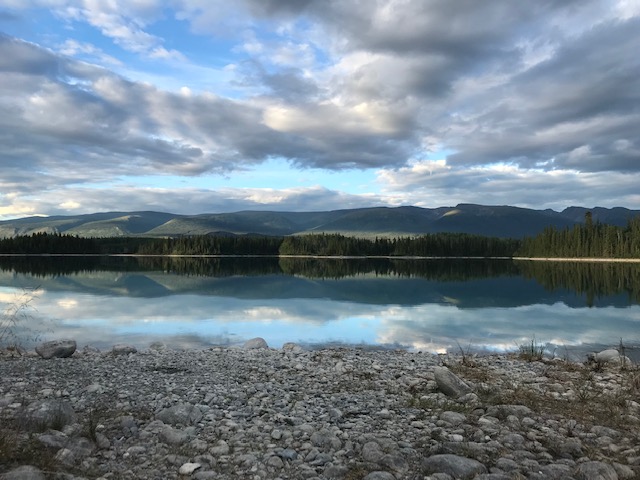 Who needs a shower when you can dip into a campground lake like this at sunset? Boya Lake in BC.
Who needs a shower when you can dip into a campground lake like this at sunset? Boya Lake in BC.
First, a bit of trivia thanks to The Atlantic: About 70% of Americans report showering once a day, a number similar to our clean French counterparts but less than the Aussies. That is too much showering, according to some grooming pundits, who suggest that we were duped by the Cleanliness Institute’s message that we stink. (Seriously, there is such an institute.)
You see where I’m going here: We did not shower every day. Nor every other day. Our longest showerless stretch may have been 10 days. Instead, we took sponge baths by adding hot water to the small sink inside the van. We dunked in ice cold mountain rivers. We poured teapots of warm water over each others’ heads to shampoo. On occasion, we resorted to disposable wipes for grimy faces.
For the real thing, we tried to find campgrounds with hot showers. But they’re scarce along the nation’s back roads or at Bureau of Land Management and national forest campgrounds. We also stopped at municipal aquatic centers, where for about $5 you can get a shower and a swim. (Unless you arrive at toonies Tuesdays swim time, which we did in Kimberly, BC. We are still feeling more than a little stupid about thinking we’d turned up at a children’s swim hour–until the nice person at the pool desk explained that the Canadian two-dollar coin is called a toonie. How could we not know this?)
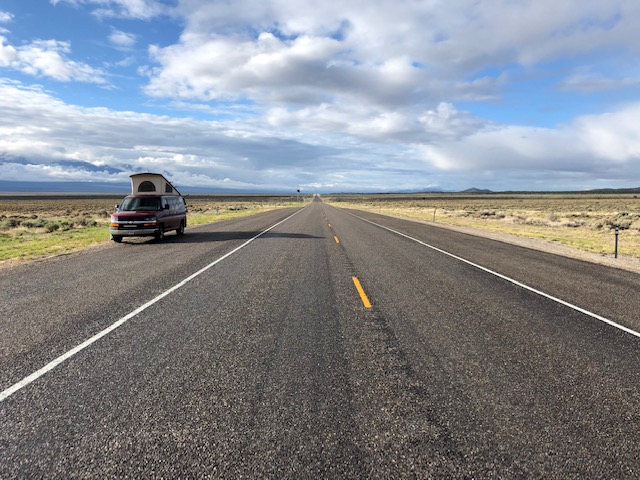 Not many campgrounds along Route 50, named The Loneliest Road in America by Life in 1986, though we did find a great hardware store near here in Ely, NV.
Not many campgrounds along Route 50, named The Loneliest Road in America by Life in 1986, though we did find a great hardware store near here in Ely, NV.
In Wyoming, three-plus months into our trip, we finally pulled out our portable backpacking shower. Oddly enough, Jim had found it years earlier in a tree, apparently forgotten by a backpacker. Some campers swear by these, but I find them a bit clunky. Here’s how it goes: fill the bladder with hot water, find the perfect branch that will be just out of reach or, worse yet, at navel height and then prepare to bare all to nearby campers. I’ve found it works better if your spouse or partner stands on a tree trunk and holds it over you. (This is an important line item for any prenup. If you can, include cleaning your bicycle, too.)
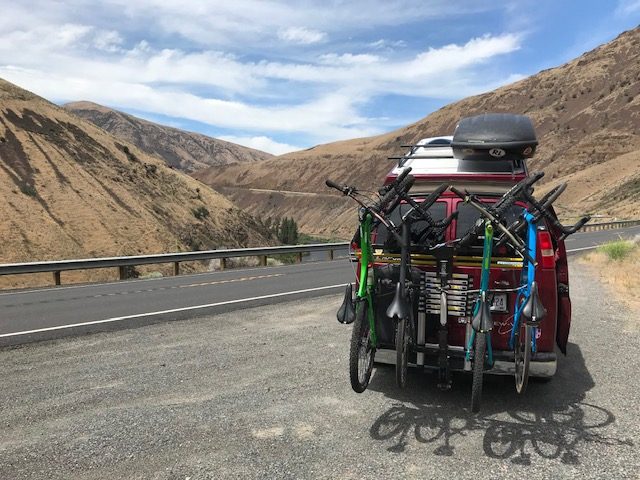 No services, just basalt cliffs and sage: Yakima River Canyon Scenic Byway between Yakima and Ellensburg, WA.
No services, just basalt cliffs and sage: Yakima River Canyon Scenic Byway between Yakima and Ellensburg, WA.
We could have sprung for the occasional motel. We never did. We like the idea of motels, but they frequently disappoint. They usually have noisy fans, a zillion green lights on electronics that some of us feel compelled to cover with facecloths and a breakfast buffet of rubbery eggs. Only once were we tempted to pull into the nearest Hampton Inn. It was a stifling August day in Whitefish, Montana, when we were having trouble finding our Zen in the 100-degree temps and smoke-filled air. But at dusk as things began to cool down, we headed into the national forest hoping to find a secluded campsite. We did, one by a quiet lake where we watched the sunset streak orange and gold.
We didn’t miss the shower.
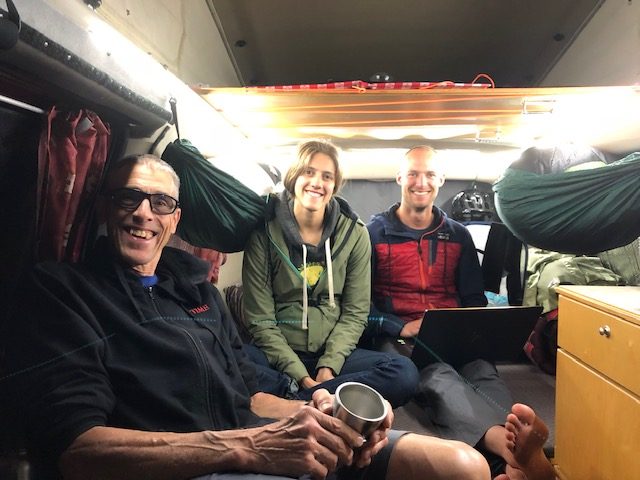 Our Chevy van may not have a shower, but it easily holds four for dinner. In fact, we have squeezed in six. Here Jim, Syd and Macky enjoy the warmth inside.
Our Chevy van may not have a shower, but it easily holds four for dinner. In fact, we have squeezed in six. Here Jim, Syd and Macky enjoy the warmth inside.
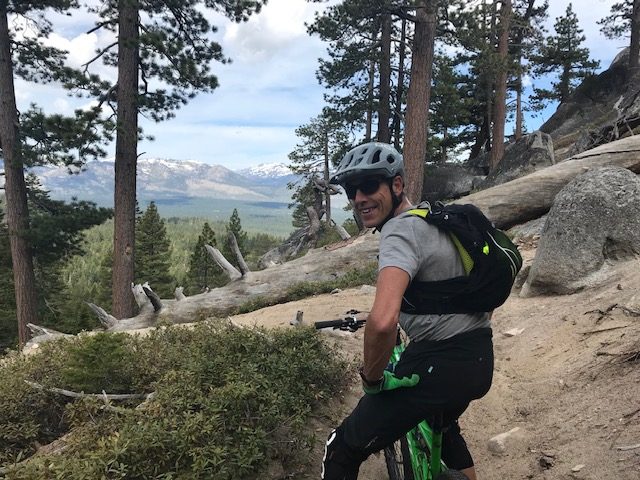 Jim on Corral and Sierra Sidewinder trail in South Lake Tahoe. The locals who recommended this also sent us to Verde Mexican Rotisserie for the best-ever burritos.
Jim on Corral and Sierra Sidewinder trail in South Lake Tahoe. The locals who recommended this also sent us to Verde Mexican Rotisserie for the best-ever burritos.